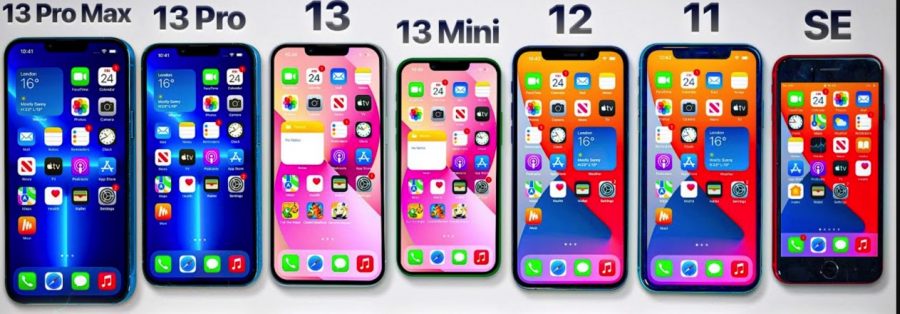Although the new iPhone does have some significant changes from the previous iPhone 12 series, such as a refresh rate of 120 Hz, some Webbies who have an iPhone 11 or newer believe that the iPhone 13 is not worth upgrading. Apple released the new iPhone 13 series on September 24th at a launch event, setting the starting price at $700.
“Only buy it if you haven’t gotten an iPhone in over three years, as the upgrades are minor,” said Matthew Gooch (‘22), who recently switched to the new iPhone 13.
If you have an iPhone 12, there is barely any reason to upgrade your phone right now, as the iPhone 12 has a lot in common with the iPhone 13. Both phones support 5G, a fast processor, great cameras, and an OLED 6.1-inch screen. Besides the new cinematic mode and the longer battery life, the iPhones 12 and 13 are practically the same phone.
On the other hand, due to the iPhone 11 only being two years old, most customers’ iPhones 11’s are likely still running smoothly with plenty of battery life left to spare. The only significant changes are the 5G support and improved cameras.
The camera on the iPhone 11 is still a great camera that is suitable for everyday photographers. It has a 12-megapixel ultrawide camera system —like the iPhone 13—that supports features such as Deep Fusion, image processing technique, and night vision mode.
However, if you are looking for a phone better suited for a professional photographer, the iPhone 13 has extra perks that you will appreciate, especially when it comes to video. The iPhone 13’s main camera has Photographic Styles, a sensor that can take in a large amount of light, and sensor-based image stabilization.
The iPhone 13 also includes Apple’s newest A15 Bionic processor, whereas the iPhone 11 runs on Apple’s two-year-old A13 Bionic processor. The iPhone 11’s processor is still able to handle tasks taking photos or scrolling social media, even though it is not the latest chip.
If you have an iPhone X or below, you should consider upgrading to the iPhone 13. With the iPhone X being launched in 2017, it is severely lacking in terms of speed, camera quality, and battery life.
“It dies really fast and it lags a lot,” said Kalman Dong (‘22), who owns an iPhone 7.
The iPhone X runs on an A11 Bionic Chip, which is four years old, while the iPhone 13 runs on Apple’s new A15 Bionic processor. The new processor for the iPhone 13 is much more efficient than the A11 processor, due to the two-core neural engine compared to the A15’s 16-core neural engine.
The neural engine is what enables the iPhone to power tasks that are reliant on artificial intelligence and machine learning. iPhone features such as Siri and app suggestions rely on machine learning to function. The iPhone X, due to its neutral core engine, may struggle to keep up with these new capabilities.
The iPhone X has a significantly shorter battery life than the newer iPhones, such as the iPhone 13. For example, the iPhone X only lasts for approximately 13 hours while the iPhone 13 has a 19-hour battery life. Although this is a great feature, the phone is substantially heavier than the previous iPhone models, weighing in at 6.14 oz.
“The phone is very heavy because the battery is massive, which allows the iPhone to have a longer battery time,” Matthew Gooch (‘22) said.
Apple’s iPhone 13 also includes better audio quality with new features such as Dolby Atmos and spatial audio playback, while the iPhone X only uses stereo playback. If you tend to watch a lot of movies, shows, or videos on your phone, these features will definitely benefit your experience.
Overall, with Apple’s iPhone X being four years old, upgrading to this year’s model will feel like a significant improvement. With the A11 processor slowing down and the battery life deteriorating, the iPhone X and previous models will not last for much longer. In addition, the iPhone 13 makes leaps and bounds in the quality of the battery, machine learning processors, and camera performance.





![All members of the Webb Robotics Winter season teams taking a group photo. Of note is Team 359, pictured in the middle row. “It was super exciting to get the win and have the chance to go to regionals [robotics competition]” Max Lan (‘25) said. From left to right: Max Lan (‘25), Jerry Hu (‘26), David Lui (‘25), Jake Hui (’25), Boyang Li (‘25), bottom Jonathan Li (’25), Tyler Liu (‘25)](https://webbcanyonchronicle.com/wp-content/uploads/2025/03/Screenshot-2025-03-10-at-2.41.38 PM.png)




